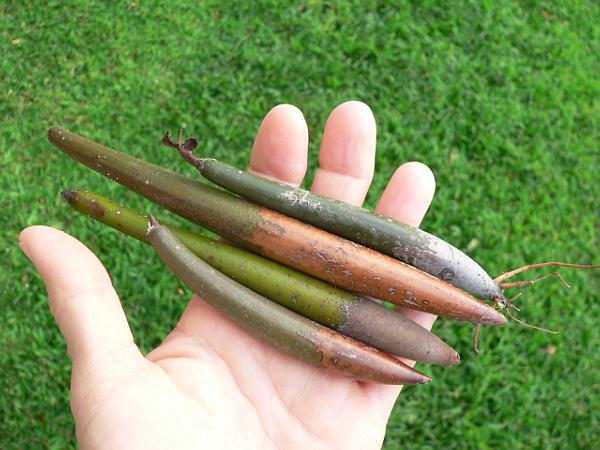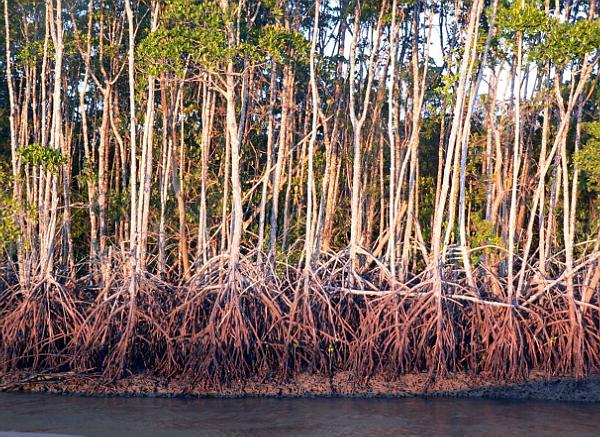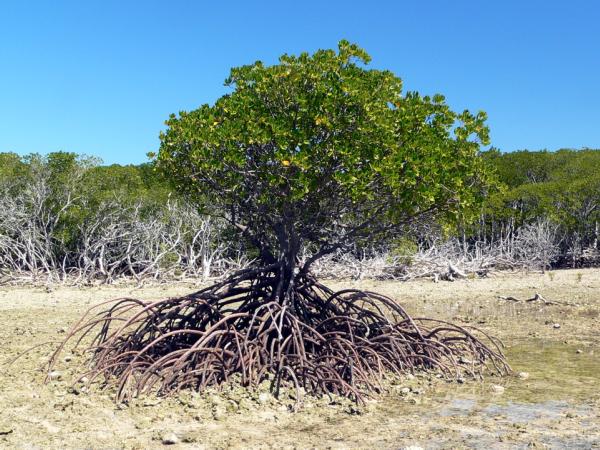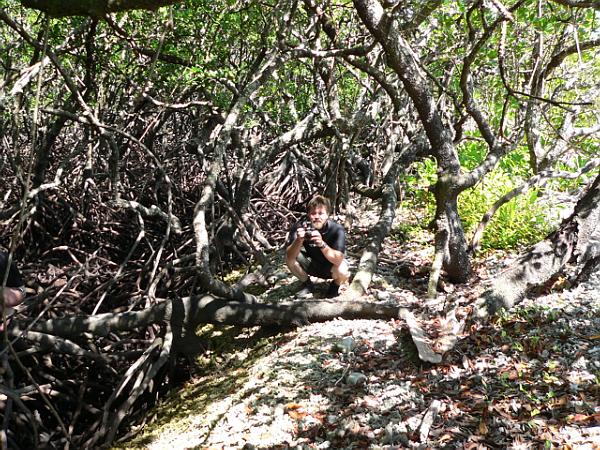Published in the Ocean Watch column, Honolulu Star-Advertiser © Susan Scott
February 1, 2008
Most Hawaii residents think of mangroves only as alien species that need to be exterminated. But last week when I found hundreds of mangrove seeds washed up on Kailua Beach, they brought back fond memories.

While visiting northeastern Australia, I saw dozens of islands and estuaries with dense, towering jungles growing right up to their waterlines. When I got closer, I discovered these trees had created their own waterlines and their own dirt, too. They were enormous mangroves forests.

Mangroves seem like marine plants, because they live in sea water, which, at 3 percent salt, kills land plants. But mangroves don’t use the salt; they just cope with it well.
Some mangrove species called excreters have a gland on each leaf that collects internal salt. When the leaf drops, the salt goes, too. The fallen leaves also provide food for some of the marine animals that live among the roots below.
Other mangrove types called excluders don’t deal with salt in their systems at all. Membranes on their root surfaces let water in but keep salt out. These mangroves have only fresh water inside.
Mangroves are native to many of the world’s tropical coastlines but not Hawaii. The American Sugar Co., however, imported mangroves here from Florida in 1902, planting them in Molokai’s mud flats to stabilize the soil. The seeds from those trees drifted downwind, and by the 1920s, small mangrove trees of this species were growing in Kaneohe Bay.
People later brought other species of mangroves to Hawaii. One arrived from the Caribbean in 1910, and another came from the Philippines in 1922 in a parcel of 14,000 seedlings. This batch went into Oahu’s saltwater marshes and is now the type that dominates Kaneohe Bay.
Mangrove trees are widespread around the world because their seeds keep their power to reproduce after floating for weeks in salt water. Shaped like fat fountain pens with one end weighted, these green and brown seeds bob upright in the water.
The term mangrove refers to about 100 species. The scientific name of the most common kind in Hawaii, the red mangrove, is mangle, but the original common name for this species was mangro. Now most people call them all mangroves.
Mangroves can stand tall in soft mud because their trunks send out above-water roots that act like tripods, stabilizing the tree. As the roots multiply and tangle, they trap sediment. In that way the tree creates more ground in which to expand.

These masses of roots also make underwater forests that attract marine animals, such as young fish, which use them as protective nurseries. One book I have lists 92 species of fish found in mangrove habitats, not to mention countless invertebrates.
I always considered mangroves unwelcome guests in Hawaii. They clog wetland areas crucial to the survival of some native plants and animals, and also interfere with the life cycles of coastal fish that depend on shallow, open bays for survival.

But after seeing this plant in its native habitat, I now appreciate its beauty and usefulness.
In the past, I ignored the cigarlike mangrove seeds lying on Hawaii beaches. Now they remind me of tall trees dipping their toes in the ocean while creating fabulous forests above and below the water. It’s a memory I cherish.